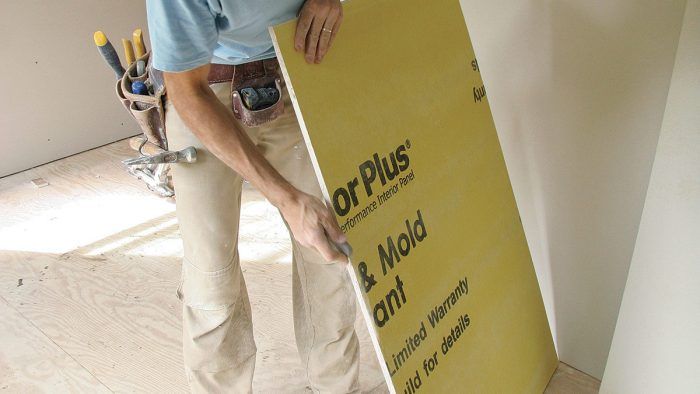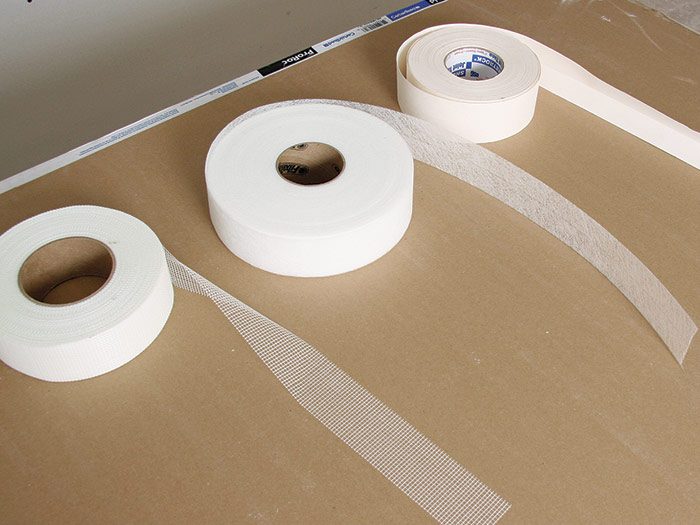Installing Drywall in Damp Areas
Follow these guidelines when drywalling in bathrooms and other potentially damp (but not wet) areas.

Moisture/mold-resistant drywall is not for use in wet areas like a tiled shower, but it is great for bathrooms, laundry rooms, and basements. Here are some important things to consider when installing drywall in these damp, humid areas:
- Use a moisture/mold-resistant product. Paper-faced and paperless drywall both have treated cores to prevent moisture and mold problems. The paper is also treated, whereas the paperless drywall is covered with a fiberglass matt instead of paper. The fiberglass is an inorganic material and is naturally resistant to mold growth.
- Use a mold-resistant tape for seams and inside corners (fiberglass mesh or fiberglass matt tape). Don’t use paper tape.

- Use vinyl corner beads only. Metal can rust, paper can grow mold.
- Use mold-resistant compound to embed and finish the tape.
- Make sure stud cavities are clear of debris and dust. You want to get rid of any materials that can hold moisture as well as any organic materials.
- If there is a concrete floor, don’t allow the drywall to rest on it; hold the drywall about ½ in. off the floor. Concrete floors can be damp, and moisture can wick up into drywall if the two materials are in contact.
- Keep humidity low in the room either with a dehumidifier or proper ventilation (such as a vent fan that is a on a timer). An ideal moisture content for the indoor air is between 40 and 50 percent humidity.
- Do a good job insulating and air sealing to help prevent moisture-laden air from entering walls and ceilings.





